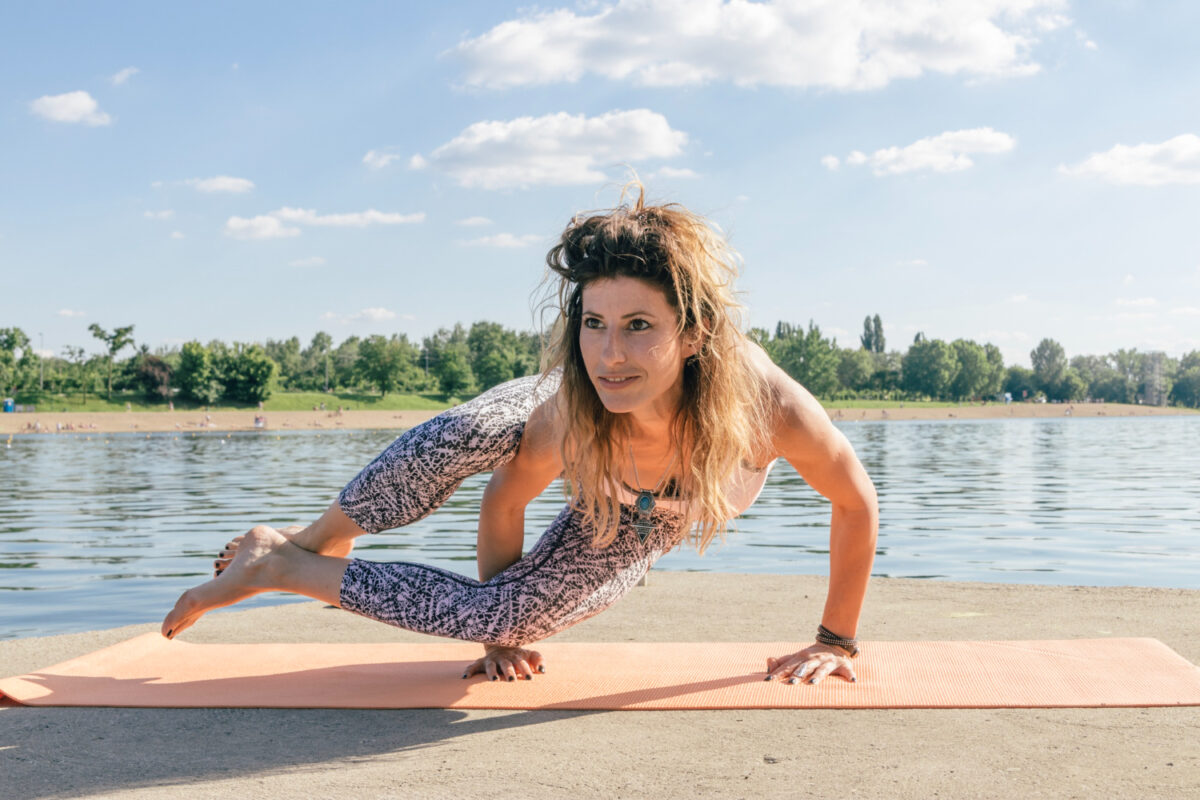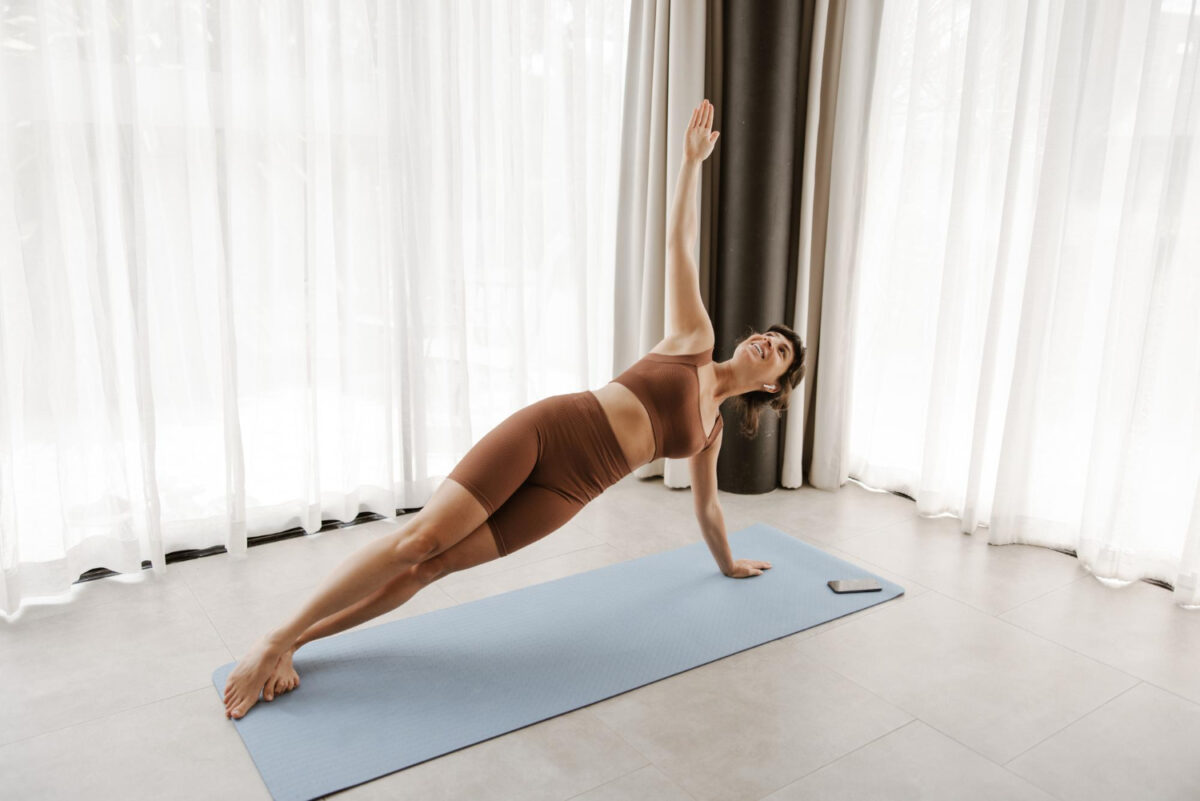Kosha, the envelope of being
In the practice of yoga, either individually or in group classes, various aspects of the human being are worked on, as a result sooner or later we make sure that this practice goes beyond the physical body. It transcends it, works other aspects such as the mind, breathing, emotions, etc. According to him yoga In our inner being there are several layers, sheaths or bodies called kosha. They range from the gross and palpable to the most subtle. They are the five sheaths of being that we present below:
- Annamaya kosha
- pranamaya kosha
- manomaya kosha
- Vijnanamaya kosha
- anandamaya kosha
Kosha it is a sheath, that which surrounds the seed, an envelope, a layer or is also translated in the West as a body. As if our body or being was made up of several layers one inside the other. Maya It refers to the form matter takes. In each of these layers or bodies the material world takes one form or another.
In turn, these envelopes will form three bodies: the dense or coarse body, sthūlaśarīra; the subtle body, sūkṣmaśarīra and the causal body, kāraṇaśarīra.
Annamaya kosha

The first layer or envelope is the physical body. Etymologically: Anna is seed, and annamaya translates as that formed of food, or material. This material envelope constitutes, together with prāṇamayakośa the densest body sthūlaśarīra. It includes everything palpable inside us: organs, muscles, skin, bones. And also the vital processes that make it possible for our body to be "alive".
We inhabit a body formed by food. Therefore, this body that we inhabit must be cared for through healthy habits. It is our transportation around the world.
The yoga practice it begins by mobilizing, activating and restoring this first physical layer. Despite this, when working on our physical body we inevitably work on the other layers. We must think that these layers are united, we are a complete being with all of them at the same time constantly interacting with each other. But it is easier to start our internal work with the most palpable layers. We do not want to start the house from the roof. First our physical body. We take care of our posture, our diet, to gradually enter the different layers, breathing, mind, emotions, intuition. Linking in each asana, in each moment. Later we will add breathing, mind, emotions, etc.
For this it is necessary to take the necessary time to practice from self-knowledge, svadhyaya.
pranamaya kosha
The next envelope is the energy layer. etymologically prana is the subtle vital energy, prāṇamayakośa the envelope of vital breaths.

This energy layer is still part of our densest body. That is, we can easily perceive and modify it, either through the practice of pranayama, yoga or meditation among others. It forms an envelope inside and outside our skin of about 2/3 cm where we accumulate our vital energy. It feeds on the chakras, energy vortices and through the nadis, energy channels, is distributed throughout the energy body.
The perception of this layer does not require great mystical skills, but any practitioner during silence and observation can feel a tingling, a special heat, a density in the air that surrounds their skin. In other words, this perception usually occurs with the time of practice, just as the first times we sit down to meditate we only feel the discomfort of the posture, slowly we can perceive the heartbeat, the subtle movement of breathing, even the brief movement of the bones. It will happen as the observation sharpens and the attention becomes more present. Then we feel this layer outside and inside the skin, forming an envelope to our physical body, and even feel how it dilates and contracts in a conscious breath.
manomaya kosha

The so-called subtle body, sūkṣmaśarīra, is deeper, higher and difficult to access, it is made up of two layers related to the mind and its processes (manomayakośa and vijñānamayakośa). The first layer is manomaya kosha. Hand either manas, refers to the mind, the thought, the mental intellect, also to the subject who thinks and desires, who has the capacity to attention. It is the essencetattva) of the Mind, one of the components of the internal instrument (antaḥkaraṇa); It is the decision-making body.
It is about our most rational mind, with its thoughts and mental processes. I think and therefore I exist. With this we want to distinguish it from the second more intuitive layer. This mental activity governs our day to day, our sleep and also our practice. It includes expressed thoughts (speech), unexpressed thoughts, emotions, dreams, and any activity of our minds that generates conscious action.
Very somatic people will carry part of this mental activity, especially that referring to our emotions (expressed or not) towards the physical body. Consequently, ailments, tensions, postural changes that lead to injury, etc. will appear in our physical body.
Also our mental patterns, whether they are our own or imposed by culture, family, etc. will model both the subtle body and consequently the physical body. For example, if we accept "I will never be able" as a pattern, because at some point someone instilled that idea in us, even if we are not aware of it, our body will literally block itself in front of certain actions, postures or classes, since we have it recorded in what deepest part of the mind and it is said mind that models the mental body thereby blocking the physical body. The result of the blockade will be that we will not be able to carry out said action or posture and with this we will justify the pattern even more, “of course it is because I will never be able to”.
Yoga gives us this space of observation, attention and self-knowledge that helps us discover our patterns, fears, tendencies and other subtle elements. To transcend them.
Vijnanamaya kosha
the next layer, vijñānamayakośa, is the sheath of discernment. Another mental layer, this time made up of more subtle and intuitive knowledge and less of mental processes. Vijna it is knowledge, discernment, understanding, intellect, in other words sacred or intuitive knowledge, but it is still part of the mind and the physical world, it is one of the 5 aggregates of the ego and the third cause of suffering.
It is the mental layer where the information is integrated as true, the result of internal and intuitive wisdom and not of external stimuli like the previous layer. There is real deep knowing built into us and knowing that goes beyond what our senses perceive and that is embodied in this mental layer.
The most important thing we can understand from this layer is this inner empowerment. Wisdom or knowledge is something of ours, it is not imposed from outside. You know, you know. There is something in you that tastes better than any other. Yoga gives us access to this layer of intuition to this wisdom beyond ordinary thought and mathematical knowledge.
anandamaya kosha

Finally, the last layer or wrapper is ānandamayakośa, the spiritual or ecstatic (ecstatic) envelope, which in turn forms the causal or original body, kāraṇaśarīra. Ananda means happiness and absolute joy.
I can tell you little about this layer from my intellectual and rational mind. Beyond meditation, when we merge into the object of observation and we are no longer body, mind, or emotions, when we transcend the body and fusion occurs. Then we approach this causal body. That is to say to our true being.
Some authors interpret this layer as the soul. That which observes that goes beyond our bodies, that surrounds everything and is both everything and nothing. But I like to think about this idea of Happiness. In other words, happiness is achieved when we disidentify from the rest of the bodies or layers. So if I am not my bodies, who am I?
I am not the gross body… I am not the five faculties of sensation, namely, the senses of hearing, touch, sight, taste, and smell…; I am not the five faculties of action…; I am not the five vital breaths, prana, etc., which respectively perform the five functions of inhaling, etc.; I am not even the mind that thinks; I am not nescience either, which is only endowed with the residual impressions of objects, and in which there is no object and no functioning. If I am none of these, then who am I?
(Meditation of the great yogi Ramana Maharashi, you can explore more in the article on the philosophy blog Hijo de Vecino who I am? ).
How to recognize, work and feel the different layers?
Yoga helps us to recognize and work with these five sheaths or these bodies. To do this, we do not practice only with the physical body, but rather breath and mind are aligned in each asana. Consequently, through the attention and observation present, we will be able to recognize and observe these more internal and subtle fields or layers. Each posture or asana is a mirror of the internal, we reflect and observe.
For example, in the balance postures we can see ourselves in this mirror of our being. Beyond being a mechanical exercise of our body structure, they show us whether or not we are in balance at this precise moment. The word balance implies all our bodies or layers. In other words, it is not the slipping mat, nor the fabric of the pants, nor that the partner moves too much. It is our mind, our powerful ego, acting, judging, criticizing, constantly moving from one thought to another. As a result, this movement leads us to mental instability, which is reflected in our physical balance.
For this you can indicate in your practice:
- Are you able to close your eyes and trust your body?
- Is there firmness and stability in your feet, in the base of your body? Or is it rather stiffness and heaviness?
- Is your mind focused right now?
- Do you become too abstracted from what surrounds you and are unable to be present? Or on the contrary, do you not get the way that external stimuli do not influence you?
- Do you feel your body, your breath, the beat of your heart, the movement of your intestines? Or do you only feel the body if there is pain or intensity?
- Do you identify with your physical body? With your muscles? With your ailments, tensions, illnesses?
- In meditation or silence, can you observe your mind? Are there thoughts? Can you find a pattern in the thoughts that appear, if any?
- Or does sleep appear in the calm and your mind falls asleep without remedy?
In summary
In short, beyond the physical body there are envelopes that take us to higher levels of consciousness. some grosser and others more subtle but all are worked on during yoga practice.
The most important thing or the key to disidentifying ourselves from the physical body and beginning to recognize the different layers is breathing. Breathe to transcend the physical body. Breathe to access more subtle levels of consciousness. Breathe because the prana, the vital energy, will circulate through all your bodies, nourishing and revitalizing them. Breathe and feel. breathing in one of the bhavanas, supports for practice that help us focus, more important and used in all kinds of meditation techniques.





